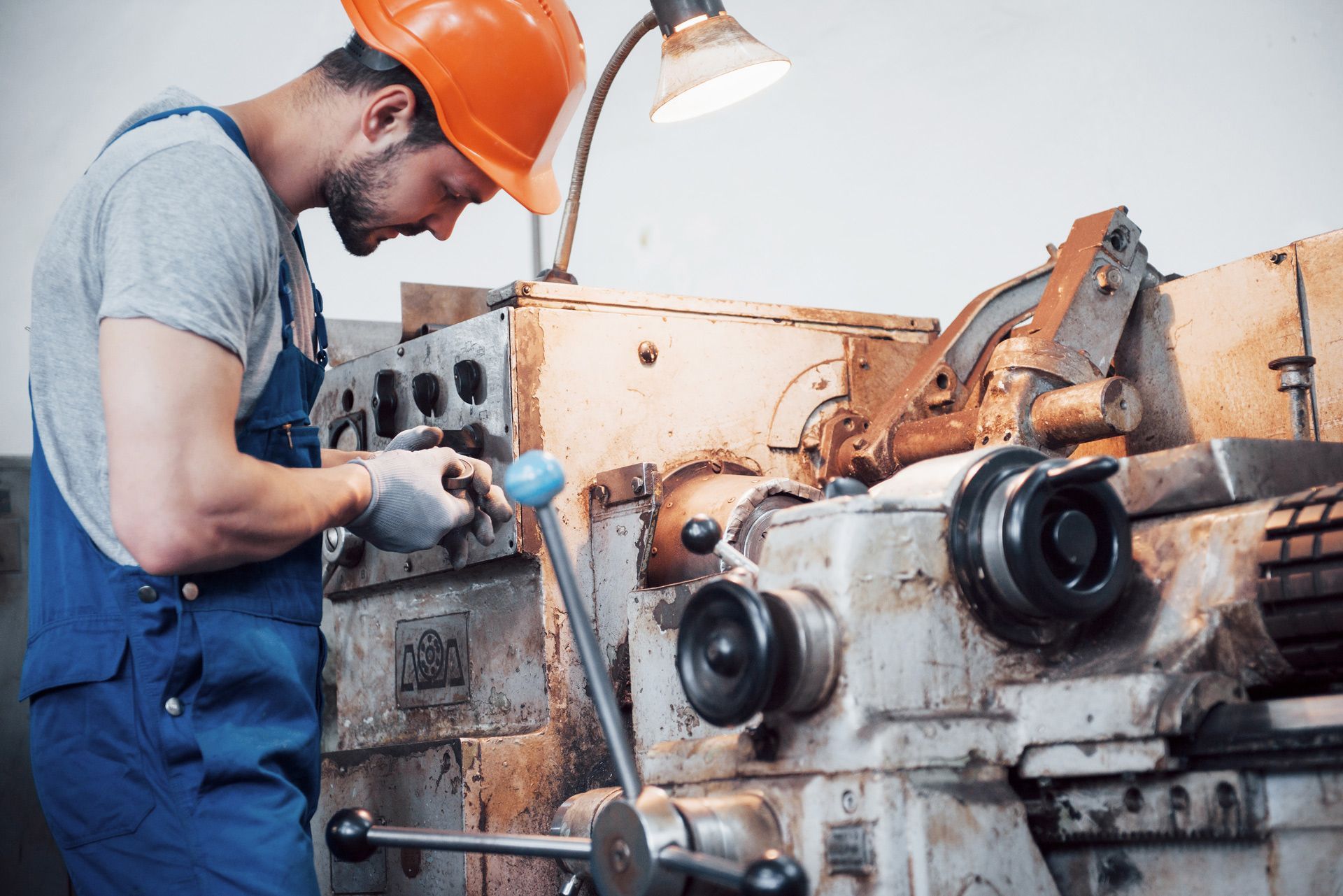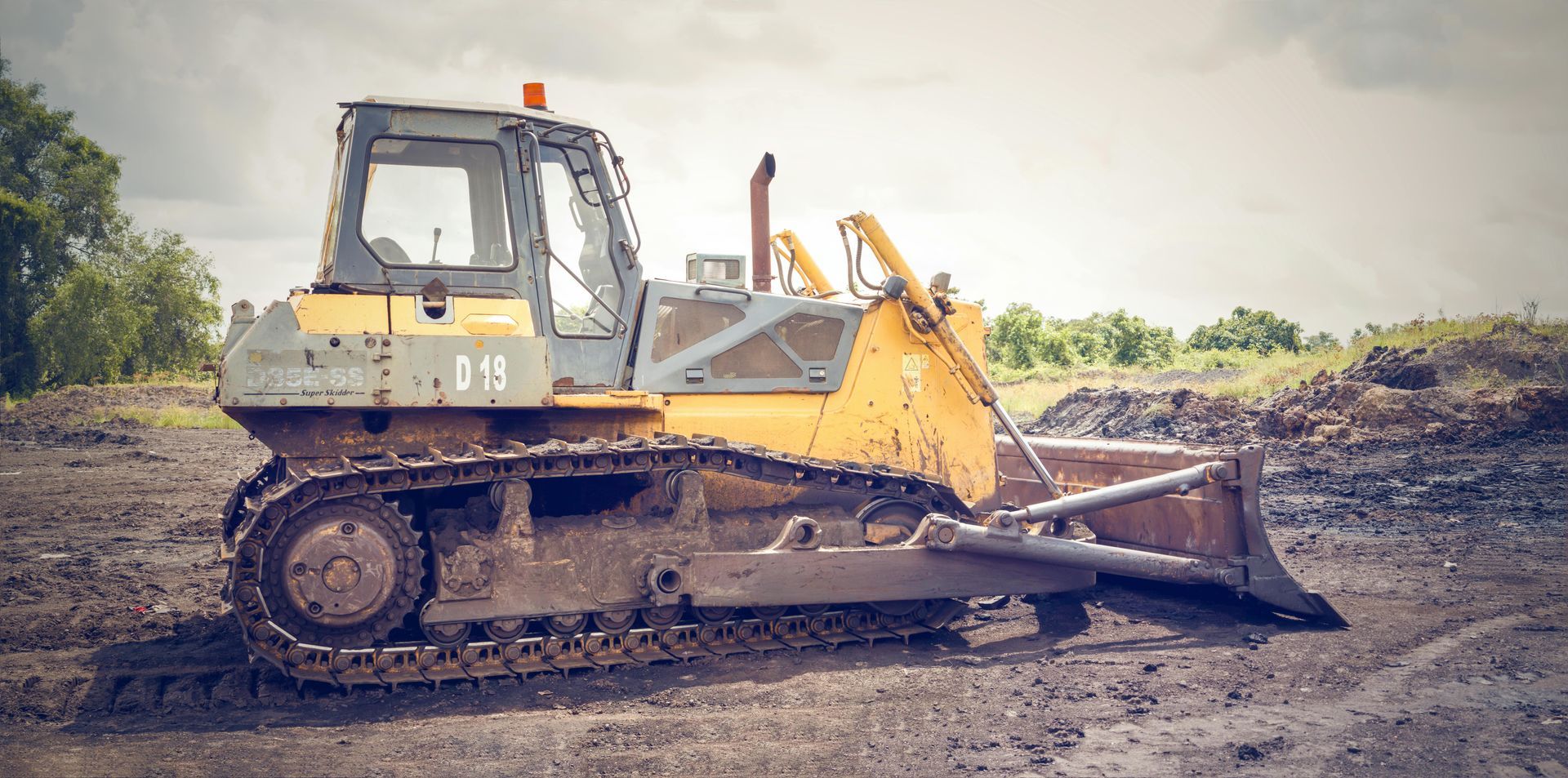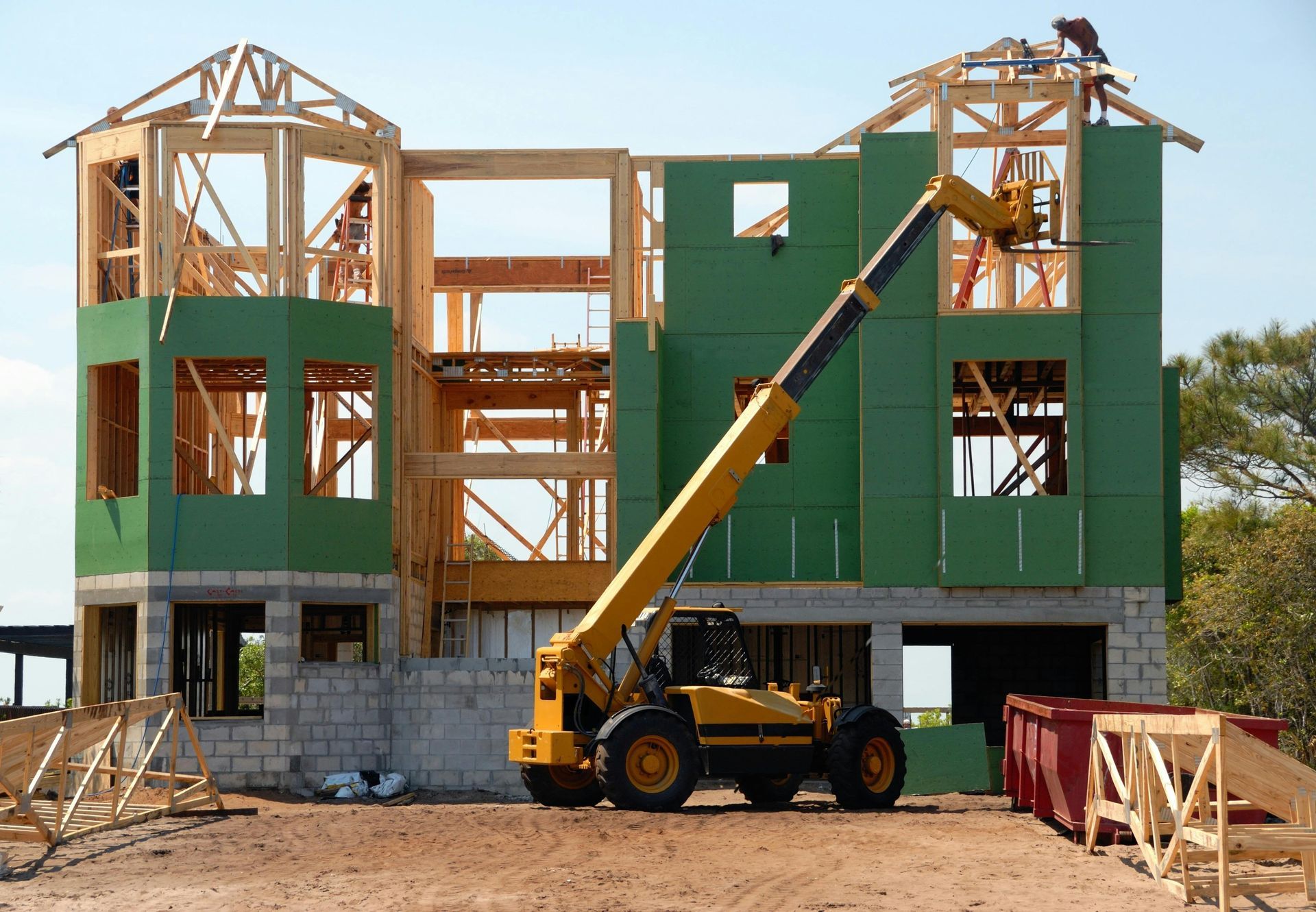Hydraulic System Temperature Effects: Year-Round Guide

How Temperature Affects Your Hydraulic System Year-Round
Temperature changes can make or break your hydraulic systems. Whether you're operating construction equipment in Vermont winters or running forestry machinery in summer heat, temperature swings affect performance, reliability, and lifespan of your valuable equipment.
The impact of temperature on hydraulic systems is significant and directly affects your bottom line. Hot and cold extremes change fluid viscosity, stress components, and can lead to expensive repairs or downtime when not properly managed. Knowing how to adapt your maintenance approach for each season is key to keeping equipment running smoothly.
Understanding these effects isn't just for mechanics. Equipment owners and operators need this knowledge to protect their investment and keep projects on schedule. Let's explore the year-round challenges temperature presents and practical solutions to address them.
Understanding Hydraulic Systems and Temperature Sensitivity
Hydraulic systems power most heavy equipment used in construction, forestry, agriculture, and trucking. These systems rely on pressurized fluid to transfer power from the engine to moving parts. This simple principle becomes complicated when temperatures fluctuate.
Key Components Vulnerable to Temperature Changes
Several hydraulic system components are especially sensitive to temperature variations:
- Seals and O-rings can harden in cold or deteriorate in heat
- Pumps and motors face increased wear when fluid viscosity isn't optimal
- Hoses and lines become brittle in cold or may bulge under heat
- Valves can stick or leak when temperatures aren't ideal
These components work together in a delicate balance that temperature shifts can easily disrupt.
How Temperature Impacts Fluid Viscosity and Performance
Hydraulic fluid viscosity—its resistance to flow—changes dramatically with temperature. This single factor affects nearly every aspect of system performance.
In optimal temperature ranges (usually 100-120°F), hydraulic fluid flows efficiently, lubricates properly, and transfers power effectively. Outside this range, problems begin:
- Too thick (cold): increased friction, higher energy consumption, slower response
- Too thin (hot): reduced lubrication, internal leakage, component damage
Even small temperature shifts can change viscosity enough to affect performance. A 20°F drop might double fluid thickness, while a 20°F increase might cut it in half.
Cold Weather Challenges for Hydraulic Systems
Winter presents unique challenges for hydraulic equipment. Cold temperatures affect everything from startup to operation efficiency.
Fluid Thickening and Reduced Flow Rates
When temperatures drop, hydraulic fluid becomes thicker. This increased viscosity:
- Creates higher resistance in pumps and lines
- Reduces flow rates throughout the system
- Increases pressure required to move components
- Slows down equipment response times
In extreme cold, fluid may become so thick that pumps can't move it effectively, leading to cavitation (formation of vapor cavities in the fluid) and pump damage.
Seal Contraction and Potential Leakage Issues
Cold temperatures cause rubber seals and O-rings to contract and harden. This contraction:
- Creates gaps between seals and metal surfaces
- Allows fluid leakage at connection points
- Makes seals more brittle and prone to cracking
- Reduces the
flexible compression needed for proper sealing
These issues often appear during warming cycles, when the metal expands faster than the rubber seals.
Starting Problems and Cold Start Procedures
Starting hydraulic equipment in cold weather requires special care:
- Allow for longer warm-up periods (10-15 minutes minimum)
- Begin with no-load operation until fluid temperature rises
- Use slow, gentle movements of hydraulic functions initially
- Monitor pressure gauges for signs of excessive resistance
Skipping these steps often leads to pump cavitation, pressure spikes, and premature component failure.
Hot Weather Effects on Hydraulic Equipment
Summer heat brings its own set of problems for hydraulic systems, many of which can cause rapid deterioration.
Overheating Risks and Performance Degradation
Hydraulic systems generate heat during normal operation. Add hot weather, and overheating becomes a serious concern:
- Optimal operating temperature for most systems is 100-120°F
- Internal leakage increases as fluid thins, causing efficiency loss
- Heat generation accelerates as efficiency drops
- This creates a
dangerous cycle of worsening performance
When system temperatures exceed 180°F, damage risk increases dramatically, with each 18°F increase potentially cutting component life in half.
Accelerated Fluid Breakdown and Contamination
Heat speeds up chemical reactions, causing hydraulic fluid to:
- Oxidize faster, creating varnish and sludge
- Lose additives that protect against wear and corrosion
- Break down and lose lubricating properties
- Absorb more water from the air through breathers and vents
These changes can transform good hydraulic fluid into harmful contaminant within a single hot season if not managed properly.
Expansion Issues and Pressure Concerns
Heat causes all materials to expand, but not at the same rate:
- Fluid expansion can cause pressure increases in closed systems
- Different expansion rates between metals can stress components
- Pressure relief valves may activate more frequently
- Seals may extrude from their grooves when components expand
These issues often result in external leaks that waste fluid and create environmental hazards.
Seasonal Maintenance Strategies
Changing your maintenance approach with the seasons helps prevent temperature-related failures.
Winter Preparation Checklist
Before cold weather arrives:
- Switch to lower-viscosity fluid appropriate for winter temperatures
- Check and replace seals showing signs of wear or hardening
- Inspect heating elements on reservoirs if equipped
- Add insulation to exposed hydraulic lines
- Verify battery strength for cold starts
- Check anti-freeze levels in cooling systems
The time to prepare is before the first freeze, not after problems develop.
Summer Readiness and Cooling System Verification
As warm weather approaches:
- Clean cooling fins on heat exchangers
- Verify coolant levels and condition
- Check cooling fan operation and belts
- Consider adding auxiliary cooling if operating in extreme heat
- Ensure proper fluid levels (not overfilled)
- Verify breather caps are clean and functioning
Cooling capacity that seems adequate in mild weather may prove insufficient during summer heat.
Transition Period Maintenance Tips
Spring and fall require special attention:
- Test fluid viscosity to determine if changes are needed
- Look for leaks as temperatures fluctuate
- Check filter condition after seasonal operation
- Analyze fluid samples to detect contamination or breakdown
- Inspect seals and hoses for cold weather damage or heat stress
These transition periods offer ideal opportunities to address developing issues before they cause failures.
Temperature-Appropriate Fluid Selection
Choosing the right hydraulic fluid for your operating conditions is perhaps the single most important temperature management strategy.
Understanding Viscosity Ratings and Temperature Ranges
Hydraulic fluid viscosity is typically rated using the ISO VG (International Standards Organization Viscosity Grade) system:
- Lower numbers (ISO VG 32, 46) work better in cold conditions
- Higher numbers (ISO VG 68, 100) provide better protection in heat
- Each grade has an
optimal temperature range of about 50°F
Knowing your equipment's operating temperature range helps select the appropriate viscosity grade.
Multi-Grade vs. Single-Grade Hydraulic Fluids
For equipment operating across wide temperature ranges, consider:
- Multi-grade fluids maintain more consistent viscosity across temperatures
- Synthetic fluids typically offer wider operating temperature ranges
- Viscosity index improvers can extend the useful range of regular fluids
While these options cost more initially, they reduce the need for seasonal fluid changes and provide better protection in variable conditions.
When to Change Fluids Based on Season
General guidelines for seasonal changes:
- Switch to lower viscosity when sustained temperatures drop below 50°F
- Move to higher viscosity when operating temperatures regularly exceed 85°F
- Consider multi-grade options for operations spanning seasons
- Always follow manufacturer recommendations for your specific equipment
Complete fluid exchange, not just topping off, ensures proper system protection during seasonal transitions.
Monitoring and Prevention Systems
Proactive temperature management prevents costly repairs and downtime.
Temperature Monitoring Tools and Technologies
Several options exist for tracking hydraulic system temperatures:
- Built-in temperature gauges provide basic monitoring
- Infrared thermometers allow quick spot checks of components
- Thermal imaging cameras identify hot spots before failure
- Electronic monitoring systems with alarms for critical conditions
The investment in monitoring equipment typically pays for itself by preventing even one major temperature-related failure.
Warning Signs of Temperature-Related Problems
Watch for these indicators of developing temperature issues:
- Sluggish operation or delayed response (cold issues)
- Higher than normal operating temperatures (overheating)
- Unusual noises (cavitation or air in the system)
- Leaks developing at seals or connections
- Discolored fluid (darkening indicates oxidation from heat)
- Burnt smell from the hydraulic system
Early intervention when these signs appear prevents escalation to system failure.
Preventative Maintenance Schedule by Season
Develop a calendar-based approach to temperature management:
- Late fall: winter preparation and fluid changes
- Mid-winter: cold weather operation checks
- Early spring: transition inspection and repairs
- Late spring: summer preparation and cooling system checks
- Mid-summer: heat management verification
- Early fall: transition preparation and system analysis
This proactive approach catches issues before they develop into failures.
Real-World Applications Across Industries
Different industries face unique temperature challenges for their hydraulic equipment.
Construction Equipment Temperature Challenges
Construction machinery often faces extreme conditions:
- Excavators and bulldozers generate significant heat during operation
- Cement mixers must maintain consistent operation regardless of temperature
- Cranes and backhoes require precise control affected by fluid viscosity
- Asphalt pavers operate in high heat environments
Construction sites typically offer limited shelter from weather extremes, making temperature management critical.
Forestry Machinery Seasonal Adaptations
Forestry equipment operates in some of the most challenging environments:
- Feller bunchers and harvesters run continuously in remote locations
- Skidders and forwarders navigate difficult terrain that stresses hydraulics
- Log loaders require precise control in varying conditions
- Mulchers generate extreme heat during operation
The remote nature of forestry work makes temperature-related breakdowns especially costly.
Agricultural Equipment Through the Seasons
Farm machinery must adapt to dramatic seasonal changes:
- Tractors operate year-round in all conditions
- Combine harvesters run intensively during specific harvest windows
- Sprayers and seeders require precise control affected by fluid temperature
- Balers and ploughs face varying loads that affect operating temperatures
Agricultural operations often have critical timing windows where equipment failure is particularly damaging.
Expert Tips for Maximum System Longevity
These professional insights help extend hydraulic system life across temperature extremes.
Storage Recommendations During Extreme Temperatures
When equipment must be stored in temperature extremes:
- Store indoors whenever possible
- If outdoor storage is necessary, protect from direct sun
- Cycle the hydraulics periodically during long-term storage
- Maintain full fluid levels to minimize condensation
- Cover exposed cylinder rods to prevent corrosion
- Consider fluid changes before long-term storage
Proper storage prevents damage even when equipment isn't being used.
Emergency Procedures for Temperature-Related Failures
When temperature issues cause problems in the field:
- Stop operation immediately if overheating occurs
- Allow gradual warming for cold-stiffened systems
- Check for leaks that may have developed
- Listen for unusual noises indicating damage
- Inspect fluid condition before resuming operation
- Reduce load if full performance isn't possible
These steps minimize damage until proper repairs can be made.
Cost-Benefit Analysis of Preventative Maintenance
The financial case for temperature management is compelling:
- Typical hydraulic pump replacement: $2,000-$5,000
- Downtime costs: Often $500-$2,000 per day
- Preventative maintenance: Usually less than $500 per year
- Extended equipment life: 25-50% longer with proper temperature management
The math makes preventative maintenance the clear economic choice.
Keep Your Hydraulic Systems Running Strong Year-Round
Temperature management for hydraulic systems isn't just a technical concern—it's a business necessity. Taking control of your equipment's operating temperature means protecting your investment and ensuring reliability when you need it most.
Don't wait for failures to address temperature-related issues. Implement seasonal maintenance strategies now and partner with experts who understand the unique challenges your equipment faces throughout the year.
Ready to maximize your hydraulic system performance in any weather? Tree Top Equipment Repair specializes in temperature-optimized maintenance for construction, forestry, truck, and agricultural equipment. Our team's expertise in Vermont's challenging climate ensures your machinery performs reliably year-round—from winter's deepest freeze to summer's hottest days.
Contact Tree Top Equipment Repair today for a seasonal hydraulic system assessment that will keep your valuable machinery running at peak efficiency no matter what the thermometer says.
Our Services
Contact Information
Phone:
Address:
113 Maple Ridge Ln, Huntington, VT 05462, United States of America
Business Hours
- Mon - Fri
- -
- Sat - Sun
- Closed
Tips & Articles
© 2025 All Rights Reserved | Mitch's Autoworks | Privacy Policy


